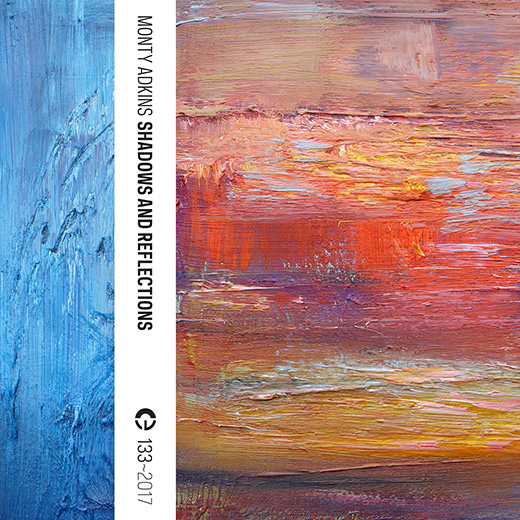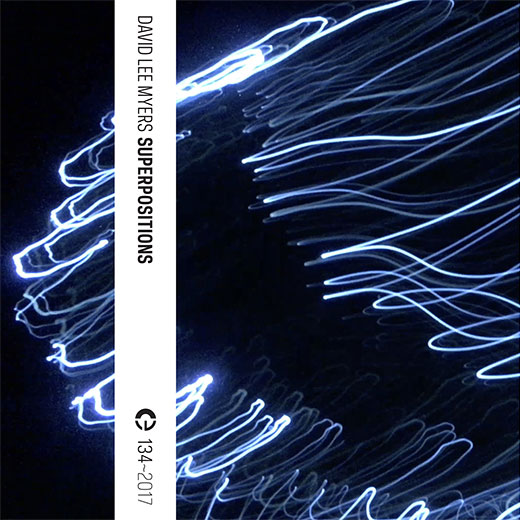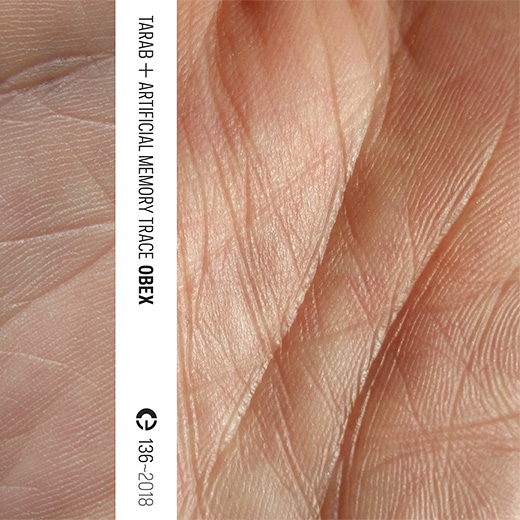
Kalifornská dvojice Freescha kdysi pojmenovala jednu ze svých desek Slower Than Church Music. K mixu downtempa a IDM ve stylu Boards of Canada ten název sedÄ›l jako ulitý, a kdyby už nebyl zabraný, skvÄ›le by se hodil i k novince britského skladatele Montyho Adkinse. Ta má navÃc chrámový rozmÄ›r zabudovaný pÅ™Ãmo ve své DNA – původnÄ› Å¡lo totiž o hudebnà doprovod k výstavÄ› obrazů expresionistického krajináře Andyho Fullalovea v gotické katedrále v severoanglickém Bradfordu.
Doprovod možná nenà to správné slovo, ve skuteÄnosti se obrazy a hudba komplementárnÄ› doplňovaly a podstatnou souÄástà celého dÃla bylo i samotné prostÅ™edà katedrály. Fullalove je i autorem obalu kazety, která vyÅ¡la na portugalské znaÄce Crónica. Adkinsova hudba je tu soustÅ™edÄ›na do dvou pÅ™ibližnÄ› dvacetiminutových skladeb, patrnÄ› upravených ze zdrojového materiálu tak, aby obstály i v novém kontextu.
ObÄ› skladby odrážà Adkinsovu zálibu v dlouhých kompozicÃch a zároveň vypovÃdajà o jeho ekonomickém pÅ™Ãstupu ke skládánÃ. Táhlé syntezátorové plochy postupujà kupÅ™edu v sotva patrných harmonických posunech, které majà odrážet pozvolné zmÄ›ny v charakteru svÄ›tla dopadajÃcÃho do bradfordské katedrály pÅ™es barevné vitrážové okno. Vertikálnà vrstvenà stop je zase inspirováno způsobem, jakým Fullalove pracuje s texturami malÃÅ™ských barev.
Prvnà track Sounds of the Shadow jde svým minimalismem na samou dÅ™eň vnÃmánà drobných nuancà hudby. Druhá skladba Sounds of the Sun je zvukovÄ› i kompoziÄnÄ› bohatÅ¡Ã, pÅ™iÄemž hlavnà roli tu hraje kontrast mezi syntezátorem pÅ™ipomÃnajÃcÃm kostelnà varhany a zlovÄ›stným basovým tónem oscilátoru. Dojde tu i na náznak melodie, kterým se Adkins jinak spÃÅ¡e vyhýbá.
Shadows And Reflections pÅ™edstavuje zajÃmavý pÅ™ÃspÄ›vek do kánonu souÄasné syntezátorové hudby. PodobnÄ› jako nedávno Caterina Barbieri na desce Patterns of Consciousness, ukazuje i Monty Adkins, že omezenà výrazových prostÅ™edků nemusà být na úkor bohatosti výsledného hudebnÃho materiálu.
David Lee Myers’s “Superpositions†reviewed by Gonzo Circus
Soon in Crónica: Tarab + Artificial Memory Trace’s “Obexâ€
Dan Powell’s “At Cuckmere†reviewed by Touching Extremes

How I love when a release teaches me something new, not only in terms of internal movement but also – as in the case of this concise work – about uncontaminated sites I would not mind dying in. Dan Powell, a long-time visitor of Cuckmere Haven (Sussex), decided to employ perceptions and actual souls affiliated to that glorious geographic area for sonic art purposes.
Meeting instances of electronically enhanced landscapes without at least a couple of yawns is pretty difficult these days. I’m glad to report that Powell didn’t manage to justify that reaction. At Cuckmere is cleverly conceived and effective, improving a listener’s aural and, why not, mental position in just over 23 minutes.
“A Walk To The Sea: Exceat To The Coastguard Cottages†begins as a classic audio documentary: steps on the ground, organic reminiscences, echoes of local fauna. Already from the outset we detect quality, both in the recordings per se and the placing/sequencing know-how. In a matter of instants the atmosphere evolves dynamically and spiritually as earthy timbres get exquisitely integrated with an increasing number of modifications, presumably courtesy of Powell’s electronic setup. The artlessness we had grown used to at the start is now mildly polluted by misshapen duck-ish voices, toneless expirations, throbbing low tones and inherent choirs of frequencies, the original materials morphed into ghosts of altered resonance. This riveting sequence culminates in the sudden disappearance of the stranger sounds, the concrete substances alone again… naturally (well, almost).
“Cable Hut 14†sees a prominent percussiveness dominating the scene. Here, too, Powell’s educated use of his twist-and-stretch arsenal of impairment transforms rather straightforward, if a little violent events into a form of awkward pragmatism. It’s the kind of place where one can still remain positively stunned by the countless facets of an acoustic world that ultimately constitutes our last resort after all the pseudo-intellectual rubbish ends – as it should – in the cesspool of ignorance. An inevitable conclusion when you’re killing the self surrounded by marine wonderment. Massimo Ricci
David Lee Myers’s “Superpositions†reviewed by The Wire

Early in his career, New York based audiovisual artist David Lee Myers discovered guitar effects boxes. He has since become adept at channeling internal electronic feedback by wiring together systems where inputs are fed at their own outputs, guiding electrons through hidden, ouroboric pathways. Superpositions, a new cassette for Portuguese experimental label Crónica, demonstrates a diverse range of sounds that may be produced using this basic principle, from the teetering dissonance of “Double Slit†to the cosmically suggestive “Rheomode†in which descending tones chase each other ever downward. The word rheomode was coined by theoretical physicist David Bohm to describe a new way of using existing language to center processes over objects. It is also an apt description for Myers’s music, thriving in a perpetual state of flux and self-discovery. Emily Pothast
Monty Adkins’s “Shadows and Reflections†reviewed by 5:4

An interesting aspect of what i’ve been calling ‘steady statism‘ is the relationship it has with the idea of stasis. What is a musical stasis? Considering that music unfolds in time, isn’t it an oxymoronic idea? Furthermore, is such a hypothetical stasis intentional (objective) or perceptional (subjective) – or both? When writing about Markus Reuter’s Falling for Ascension, i remarked about one of the fundamental characteristics of steady statism: behavioural stasis, where the music changes over time but its underlying mode of operation – the compositional processes that lead to the musical material – remains essentially static, a system out of which musical outcomes emerge. More recently, i’ve been reflecting on the other kind, perceptional stases, where the emphasis is on extreme stillness of utterance, which may or may not be (or appear to be) the product of a behavioural stasis.
A striking example of this can be heard on Monty Adkins‘ Shadows and Reflections, released a couple of months ago on the Crónica label. This album was one i’d been anticipating for a while; Adkins spoke about it briefly during the Dialogue we recorded together in the spring, explaining how it was inspired in part by the process of painter Gerhard Richter:
…it’s the way in which he chooses certain types of colours on his squeegee, and then draws them very slowly down the canvas. So one of the things i’ve been working on recently is how you could actually compose very short fragments of material and then slow them down, and then, as he does, layer them on top of one another. So i’ve just finished a long, 40-minute piece, and that piece is made up of six three-minute pieces, and what I did was slow those pieces down, just as Richter would take very specific parts of the paint, and then slowly draw those across and add extra layers on the canvas. So that piece was drawn out of the technique of his paintings. [… It has] no gesture in it at all, which is quite unusual for me […] it does go somewhere but it’s pushing that to the absolute extreme: out of forty minutes, the main thing happens at thirty-two minutes. And I find, [when] you get to that point, there’s almost a sense of ecstasy.
This latter aspect is a familiar Adkins trope, one i’ve remarked upon numerous times previously, where the timing of a gesture or sound is not merely pivotal but transformative, making one reappraise much if not all that went before. But my anticipation for Shadows and Reflections was particularly piqued by the idea of it being essentially bereft of gesture, suggesting an altogether more ‘flat’ sonic journey.
That suggestion is emphatically borne out in the work’s two 20-minute movements, which are easily Adkins’ most perceptionally static pieces to date. Beyond this, they also mark the furthest point away from his acousmatic beginnings, focusing on just a single timbre – the organ in Phipps Hall at Huddersfield University – which is tightly-woven into a musical fabric that’s ostensibly dense but suffused with differing levels of light. The importance of light is indicated too in the album’s complementary artwork, which features details from two paintings by landscape artist Andy Fullalove, ‘Sounds of the Shadow‘ (blues) and ‘Sounds of the Sun‘ (reds). Adkins has mirrored these titles in the work’s two movements, while a different painting of Fullalove’s – featuring a network of crosses suspended in a kaleidoscopic colour-space – bestowed on the piece its overall title Shadows and Reflections. Light is paramount.
Monty AdkinsTo call it ‘static’ is not an overstatement, and whereas Adkins’ music has often had the epithet ‘ambient’ applied to it (often, indeed, by me), it has never been more appropriate than here. It displays those wondrous paradoxes endemic to ambient’s unique demeanour: aloof warmth, passive engagement, disinterested serenity. The perceptional stasis it establishes is not unlike the experience of staring at a mountain, or a landscape of fields, during the night and day respectively, as the play of moon- and sunlight, occasionally deflected by clouds, passes across its surface, causing tiny shifts in the details of its complexion.
Though both movements are dronal, Sounds of the Shadow is the more steady, fundamentally exploring minute shifts in harmonic emphasis, always in relation to an omnipresent deep drone, a low F♯. This unwavering drone becomes the root of a harmonically stable stasis in which, like a glacial passacaglia over a ground bass with just a single note, Adkins echoes the practice of pulling out organ stops by teasing out certain pitches and overtones to tilt and rebalance the music’s tonal implications, giving the delicate impression of chord progressions. Especially lovely is a series of small higher register surges that occur from around four minutes in that result in an exquisite penumbral balancing act.
That these movements are primarily perceptional and not behavioural stases is more clear in Sounds of the Sun. The drone here, despite being no less omnipresent, is mobile, although one’s ability to identify the points where it – or, indeed, anything else – moves is almost impossible (skipping through the track at, say, 30-second intervals is genuinely eye-opening, revealing just how much is imperceptibly going on). The paradigm for this movement is established in the first few minutes: tonally more complex – its opening chord is a tight diatonic cluster – with a roaming harmonic sense. The word almost seems ludicrous in such a context, but the piece literally modulates: its shifting tonal centre is gently recoloured via inversions, and there’s a distinct long-term understanding that emerges of how we have infinitesimally been harmonically relocated. Despite employing just the sound of the organ, for the first half of Sounds of the Sun it’s curiously easy to forget that this is what we’re hearing, a side-effect (and, i think, a healthy one) of being drawn into its contemplative static space and focusing less on surface details. At certain points, though, Adkins exerts more obvious involvement, and these are the only moments when the perceptional stasis is noticeably disturbed by activity. A rich sequence of swells around thirteen minutes in is the most arresting example of this – gorgeous for its own sake as well as in its continual clarifying and blurring of the harmony – yet even this doesn’t cause enough ripples to worry the weight that keeps the music almost anchored in place.
For all its supposed lack of detail – “no gesture in it at all†– i’ve found myself returning to these two pieces again and again and again in recent weeks, and every single time hearing them entirely differently, finding new details, reappraising their trajectories (if that’s the right word for such crawling material). Sometimes it’s been the entire focus of my world for 40 minutes, sometimes it’s been there with me while i’m doing other things; as with the very best and truest ambient music, it works either way, fluctuating freely in its engagement with me and mine with it. That being said, it’s very hard to ignore such utterly mesmerising music.
Shadows and Reflections is available direct from Crónica as a limited edition cassette and digital download. Simon Cummings
via 5:4
David Lee Myers’s “Superpositions†reviewed by Loop.cl

David Lee Myers is a visual and sound artist who lives in New York. Since 1987 produces electronic music under his own name or under the pseudonym Arcane Device. Today he has a discography of 20 albums in Generator, ReR, Silent, RRRecords, Staalplaat, among other labels.
The first time I listened to David Lee Myers’s music was through his Arcane Device moniker in the early 90’s.
Lee Myers has collaborated with renowned artists such as Asmus Tietchens, Tod Dockstader, Thomas Dimuzio and VidnaObmana, among others.
His music is characterized by the incorporation of “feedback machines” which consists of the interaction between misfigured microphones and speakers when they are being amplified, producing high-pitched chirps.
In the 11 tracks of this disc, Lee’s abstract sound world is appreciated by sound waves, drones, glitches, which develop in a context of scarce harmony and sometimes almost inaudible sounds. Guillermo Escudero
via Loop
New Release: Dan Powell’s “At Cuckmereâ€

Crónica is proud to present its first release by Dan Powell, “At Cuckmereâ€.
I’ve been visiting Cuckmere Haven all my life. It’s a special place, not just because it weaves in and out of my family history, but because it’s the only undeveloped river mouth on the Sussex coast.
I visited on 17th February 2017 to record audio and collect objects. This was used as source material for an electro acoustic performance, which was then combined with the original elements to make the piece.
DP
Dan Powell was born in Essex and moved to London in 1988 to study photography at The Polytechnic of Central London. After college he ran a gallery on the Southbank, showed a few installations and was involved in the OMSK collective putting on arts events. He moved to Brighton in 2000.
Dan Powell is a sound artist who uses handmade and proprietary electronics, tuned percussion and a variety of acoustic instruments and household objects to make his work. A lot of the time he likes to work with other people in various combinations, especially with Gus Garside and Chris Parfitt in The Static Memories and Nil respectively. Solo projects include a hand built electronic instrument, and a piece marking 75 years of St. Dunstans hospital.
“At Cuckmere†is now available to stream or download from Crónica, Apple Music, Spotify, and other venues.
Monty Adkins’s “Shadows and Reflections†reviewed by Blow Up

La Crónica continua a dar conto di esperienze artistiche particolari e curate attraverso delle cassete dal formato più che adatto a un minutaggio abbastanza ridotto. In questo caso si tratta di musica per uns installazione di un pitore (Andy Fullalove) nella cattedrale di Bradford in occasione del restauro di un’opera (un paliotto d’altare) del pittore, poeta, designer e architetto William Blake (Ruskin e Rosseti erano sui amici). Il risultato di questa sinergia è una riflessione sulle ombre e sulla lice (Blake fece pure alcune vetrate della cattedrale). Alcuni samples organistici sono amplificati, dilatati, loopati in un liquido tappeto sonoro. (7) Girolamo Dal Maso
Soon in Crónica: Dan Powell’s “At Cuckmereâ€



